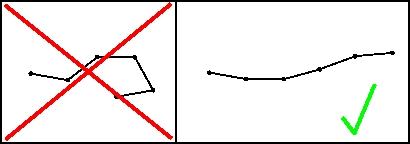
Entropy is often thought of as a measure of disorder for a physical system. Using the canonical example of a bedroom, one might call a bedroom with clothes and books scattered all around the floor a high entropy system. If the books and clothes were instead neatly stacked into piles, this would become a low entropy system.
On a microscopic level, entropy is proportional to the log of the number of configurations of the system, i.e. the number of ways you could equivalent arrange the system given certain constraints. In fact, the exact formulation is S = kB ln X, where X is the number of configurations and kB is Boltzmann's constant.
Continuing the bedroom analogy in this microscopic framework, if there were a large number of books and pieces of clothing in the room and we divided the room into some number of squares, there would be a large number of possible configurations in terms of which clothes and books were in which squares. (This number would be very large if you happened to have a big bedroom and lots of books and clothes!) If on the other hand we neatly stacked all the clothes into a pile that occupied only one square and did the same with the books, then we would see that this is essentially the only configuration (assuming that each square of the room is otherwise identical). Thus even in the microscopic view, a clean room has far less entropy than a dirty one!
This same sort of logic can also be applied to DNA, even though it is nothing like a bedroom. If we take a phyiscist's eye view of DNA (read: ignore most/all of the details), it is nothing more than a simple polymer -- a long chain made up of N individual units linked together. While we might assume that the individual units are base pair segments, the story is somewhat more complicated depending on what length scale we are examining DNA. It turns out that each base pair segment can not be at an arbitrary angle relative to its nearest neighbors. Instead, DNA prefers to have only small differences in the angle between neighboring bases.

[DNA can't change direction drastically between neighboring base pairs. Instead because of its rigidity, the angle between successive base pair segments is usually very small.]
DNA is in fact very rigid -- the overall change in angle is quite small until we look 7-8 bases away in either direction from a given base. This number of bases (~15) makes up what is known as a Kuhn segment, the minimum length of polymer that can be considered an independent unit. The typical length of a Kuhn segment (persistence length) of DNA is 50 nm (15 * 0.34 nm), so to find the approximate number of Kuhn segments (NK) for a given piece of DNA, we take the length of the DNA (L) and divide it by twice the persistence length (Lp), i.e. NK = L/2Lp. For Phi29, L = 20000*0.34 nm = 6800 nm and NK = 6800 nm/2*50 nm = 68, and therefore there are ~102 Kuhn segments in the DNA of Phi29.
If we assume that each Kuhn segment can have g possible conformations, then a chain of NK Kuhn segments will have gNK possible configurations. If the DNA is stretched out into a long and disordered chain (also known as a swollen polymer), then the entropy is S = kBln gN = kB NK ln g.
If DNA is instead wound into a tight coil around the inside of a capsid, as is found in Phi29, then there is essentially only one possible configuration. Thus the entropy for this state is S = kB ln 1 = 0, and the change in free energy (the free energy F = E - TS) from the disordered swollen state to the well-ordered packed state is kBT NK ln g. If we assume g is approximately of order e, i.e. ln g ~ 1, then the energy cost due to reducing entropy via the packing process is Eentropy ~102 kBT. Even if g were substantially larger, e.g. g = 100, then ln g is still fairly small (ln 100 = 4.6), and the total energy cost due to entropy would still be <103 kBT.